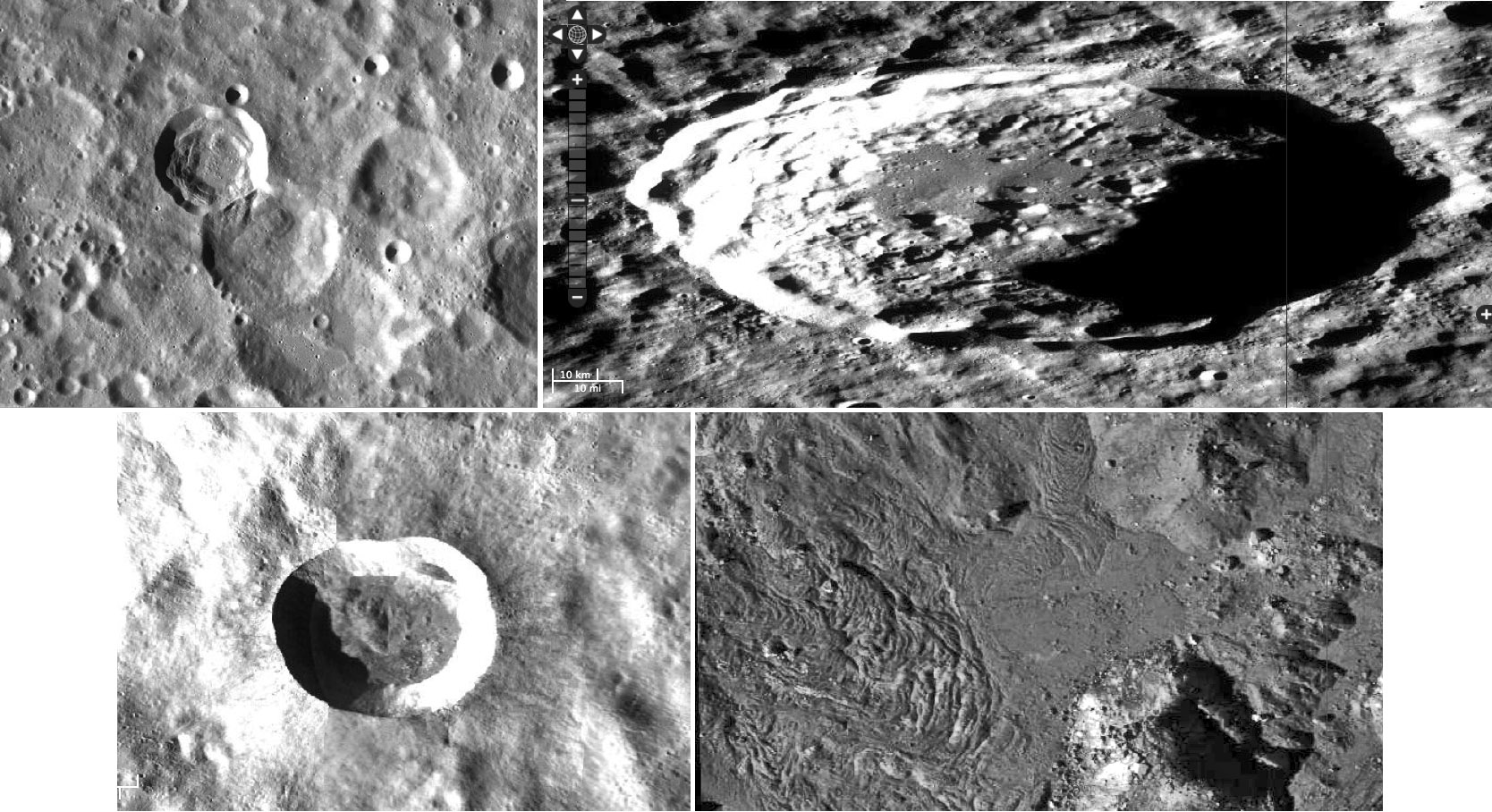September 24, 2021
Casual Discoveries
Originally published November 25, 2011

Lunar Reconnaissance Orbiter images from Quick Map (NASA/ASU)
In browsing through the LRO Quick Map looking for craters with impact melt I came across a variety of interesting features and decided to share them all.
At top left is an odd crater pair - 42 km wide Van Gent below and Van Gent X above. It is peculiar but not unique that a degraded crater received a name
where a nearby younger and more distinct crater is only lettered. The straight wall separating the two is typical of simultaneous impact, but that doesn't look
the case here - X has pushed in Van Gent's rim and is much fresher. And is that impact melt on the floor of the unnamed crater below right of Van Gent?
Where did it come from? Next: At top right is Kirkwood (D = 67 km) with a smooth floor. In the center is a small bright hill surrounded by a dome-like swell;
a second weaker one is to the left. Domes and domical swells are rare on the farside because of the paucity of maria, but this seems to be a true volcanic
phenomena. Next: At bottom left is a very, very young crater - Giordano Bruno is estimated to be a million years old or younger. It is so bright that it saturated the WAC sensors. NAC images of the floor (bottom right with 1.6 km wide field of view) reveal several types of impact melt. Most dramatic are the
massive flows with corrugated surfaces. These look like ropy lava flows on Earth, formed when a viscous material folds upon itself as it sluggishly moves
downslope. A much smoother and presumably more fluid melt created a broad pond in a low spot on the floor. Probably the LRO team has described these
remarkable flows in G. Bruno somewhere but the other features may not have been described before. Take a close look at the farside - you may notice
something never before seen.
Chuck Wood
Technical Note: The 10 km scale bar on the Kirkwood image must be wrong. Based on that scale the crater is ~160 km, but it is actually only 67 km.
Yesterday's LPOD: Melt Crater Search
Tomorrow's LPOD: Moon Birth
COMMENTS?
Register, Log in, and join in the comments.



